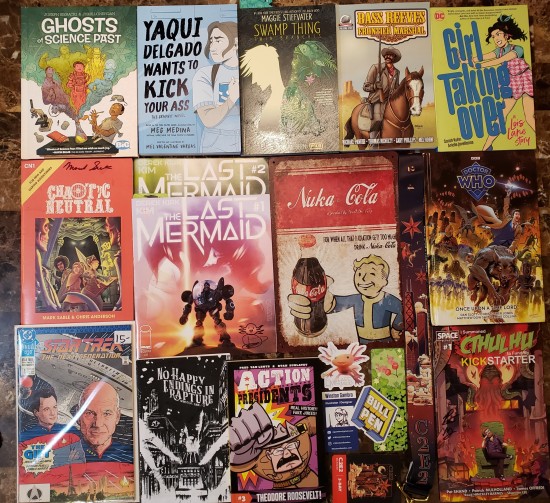
The view from our Chicago hotel under cover of darkness, where none might find us among the millions in the big city. Kinda like loners on the internet.
Previously on Midlife Crisis Crossover: I launched this wee blog on April 28, 2012, three weeks before my 40th birthday as a means of charting the effects of the aging process on my opinions of, enthusiasm for, offense at, and/or detailed nitpicking of various works of art, expression, humanity, inhumanity, glory, love, idolatry, inspiration, hollowness, geek lifestyles, food, and Deep Thoughts. MCC has also served as a digital scrapbook for our annual road trips, comic cons, birthday expeditions, and other modest travels. It’s a general repository for any other content that comes to mind and feels worth the time and effort to type up, proofread, and release unto a world-at-large that rarely visits websites anymore unless social media points them there.
I commemorate MCC’s every anniversary here, but this year my wife Anne and I were busy that weekend, preoccupied by the geek gala that was C2E2 2024. We spent the site’s 12th anniversary not really thinking about it — much like the rest of the world, really. Rather than dwell on my dozen years of toiling in obscure hermitage on this tiny, mostly unpaid quasi-boutique hobby-job, we can instead center our closet-sized soiree on two of our favorite topics that come up whenever time and experience permit: travel and food.








